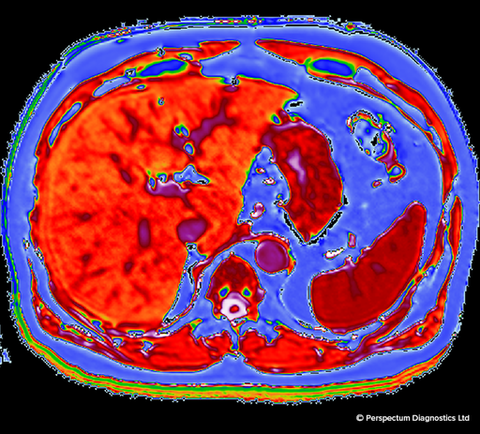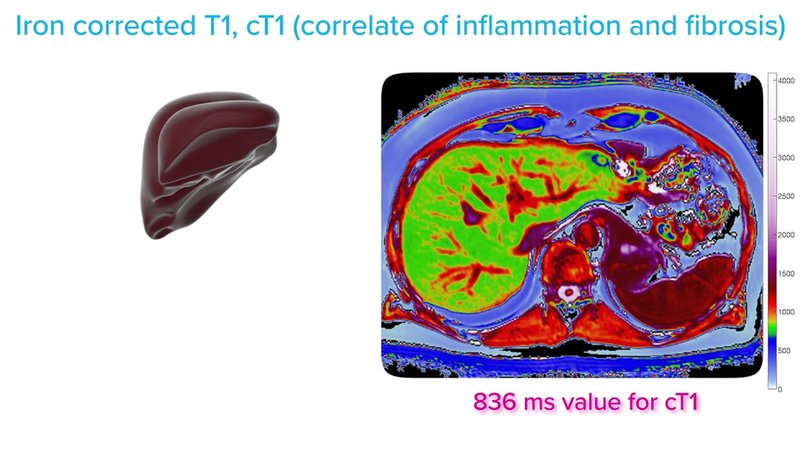Diagnostics
Perspectum Diagnostics: the biggest start-up you’ve never heard of
Perspectum Diagnostics is the UK’s fastest growing medtech company and the University of Oxford’s biggest spinout in the past ten years, but until now it has kept a relatively low public profile. Using its medical imaging expertise, the company is now focusing its efforts on a clinical trial to assess the long-term impact of Covid-19 on the body’s internal organs. Chloe Kent finds out more.
F
or patients with abnormalities of the liver, the journey to a diagnosis can take months. They face a deluge of appointments, blood tests and ultrasounds, before finally undergoing a liver biopsy to decipher the problem. The whole process can take between 16 to 32 weeks. Not only is this hugely disruptive to a person’s life, but on top of it all, the eventual liver biopsy is a fairly gruelling procedure.
Medical imaging specialist Perspectum Diagnostics’ flagship technology LiverMultiScan aims to cut the road to diagnosis down to just two to six weeks. Using multiparametric magnetic resonance imaging (MRI), the software characterises liver tissue by providing quantitative measures of fat and correlates of iron, fibrosis and inflammation.
This information is then used to diagnose liver disorders, such as non-alcoholic steatohepatitis (NASH). It’s been cleared by the US Food and Drug Administration, CE marked and is available at 290 sites globally, including via a number of UK NHS pathways.
“In healthcare there are lots of pictures, CT scans, MRI scans, endoscopies, slides, and we’re getting better and better at analysing them with computers,” says Perspectum CEO Dr Rajarshi Banerjee. “What our company specialises in is products and services to enable better diagnosis and monitoring, by using computer-aided vision.”
Perspectum is now using its imaging expertise to conduct a clinical study into the long-term impacts of Covid-19 on the internal organs. While there’s evidence of recovered Covid-19 patients sustaining a certain degree of organ damage, it’s too early to say what this could mean for public health in five to ten years’ time – and if the impact is set to be serious, it’s vital that healthcare providers are prepared.
How does LiverMultiScan work?
MRI uses strong magnetic fields and radio waves to produce detailed images of the inside of the body. Just as blood, bone and skin will all absorb microwaves differently and produce different images on an MRI scan, the same is true of different healthy and unhealthy variants of liver tissue.
LiverMultiScan enables clinicians to examine the entire liver so they can consistently quantify evidence of liver disorders in a comprehensive visual format. Unlike conventional MRI, LiverMultiScan uses a series of images to build quantitative parametric maps of the liver, which allow clinicians to see regional variation of factors like cirrhosis or swelling throughout the entire organ.
“It’s the difference between holding up two pieces of fruit and saying one is heavier than the other. and weighing and measuring them.”
Banerjee says: “It’s the difference between holding up two pieces of fruit and saying one is heavier than the other, and weighing and measuring them and saying one weighs 250g and the other weighs 200g.”
As well as helping patients to find a diagnosis, the technology has been used to chronicle the impact of a new drug on their liver condition over time, ascertaining its effects in a matter of weeks instead of months. This has been done in individual patient care settings, as well as in clinical trials.
Perspectum has fingers in multiple pies
LiverMultiScan isn’t the company’s only offering. The company has also received FDA clearance and CE marking for its magnetic resonance cholangiopancreatography (MRCP) technology, MRCP+.
MRCP+ uses a quantitative artificial intelligence (AI) algorithm for MRCP images of the bile ducts and pancreas, to provide improved visualisation of intra-hepatic ducts and measure the widths of bile ducts, biliary tree volume and gallbladder volume.
Banerjee says: “About 10% of us will get gallstones in our lifetime, and the number is growing. So MRCP+ is actually a really nice technology for that part of the population. LiverMultiScan is a little bit more mature, it’s got more commercial traction. MRCP+ is just a younger brother.”
In addition to its two commercially-approved technologies, Perspectum has two other projects on the go. HepaT1ca, a surgical planning tool for resections in liver cancer patients to improve post-operative morbidity. The project has received a £1.1m government grant from Innovate UK to run whole genome sequencing study, to see if imaging can work in conjunction with genome sequencing to improve outcomes for patients.
“Lots of poor decisions have been made both clinically and commercially based on pathology.”
“Liver cancer is one of those cancers where there’s actually a lot of treatments available,” says Banerjee. “You can cut it out, burn it, you can ablate it, you can inject it with stuff that will kill the tumour, you have drugs for cancer, you can transplant. Trying to work out which one will work best in one patient is hard, and HepaT1ca helps the surgeon and the multidisciplinary team decide what’s best.”
Alongside HepaT1ca, Perspectum’s Digital Pathology project is dedicated to generating a vial to file service for standardised and more accurate reads in NASH trials.
Banerjee says: “Lots of poor decisions have been made both clinically and commercially based on pathology. Drugs which probably can work in liver disease have been written off because some pathologists didn’t think they worked.”
What does this have to do with Covid-19?
Covid-19 is known to play havoc on the kidneys, lungs and liver, as well as the immune and haematological systems, but the extent of any long-term damage this could cause has not been characterised.
Perspectum is now working with the University of Westminster’s life science team to map how the SARS-CoV-2 virus that causes the disease impacts multiple organs over time. Known as COVERSCAN, its primary objective is to determine the prevalence and degree of lung, heart, kidney, pancreas and spleen injury in recovered Covid-19 patients.
Taking place over two years, the trial aims to recruit over 500 patients and assess the health of their organs over time. The research team is also hoping to find out whether different genetic traits may influence recovery, using MRI, blood tests, basic physical measurements and questionnaires.
“We just don’t know whether coronavirus causes long term damage.”
“The study serves two purposes,” says Banerjee. “One, it will tell us if these patients need ongoing follow-up, because if they do we need to factor that into demand forecasting for the NHS. Secondly, it will inform the modelling, because decisions about lockdown will change if it turns out that coronavirus is horrible when you get it, but afterwards you’re fully recovered. That’s a very different world from if you get it and you lose 20%-30% of your kidney function.”
A world in which coronavirus causes long-term damage to the body is indeed a very different one to a world in which it does not. Banerjee mentions conditions like polio and post-treatment Lyme disease syndrome, where the burden of the disease is the long-term disability that can follow it, rather than the short-term infection.
“We just don’t know whether coronavirus causes long term damage to your kidney, your liver, your heart,” he says. “But if it does, then that’s worrying.”
While the study will run for 24 months, it is hoped that preliminary results will be able to give some indication as to the long-term impact of severe Covid-19 on internal organs as early as August 2020.

Scan image of NASH patient showing high levels of CT1.
Image: Perspectum Diagnostics
Emerging from the shadows
Perspectum has kept a relatively low profile since it was founded in 2012, with some describing the firm as “Oxford’s best-kept secret”. It seems the company was too busy developing an industry-standard software that is now used in a third of all commercial liver trials to focus on its media presence.
Banerjee says: “It’s not that it’s not been very high-priority, but it’s a personality thing. When you look like a scarecrow and dress like a scarecrow you kind of hide in the shadows a bit.”
“When you look like a scarecrow and dress like a scarecrow you kind of hide in the shadows a bit.”
Despite this, the company now employs 210 people across three continents, a figure which has trebled over the course of two years, and is one of the fastest-growing life sciences companies in the UK. It has successfully won 18 different grants at a total value of $100m, and has been awarded $11m in direct funding.
The impact of Covid-19 will inevitably last longer than the pandemic itself, as global society attempts to recover from this once-in-a-generation disaster. Whether that impact will also live on inside of the bodies of those once infected remains to be seen, but if it does then the COVERSCAN study could be what puts Perspectum on the map.
